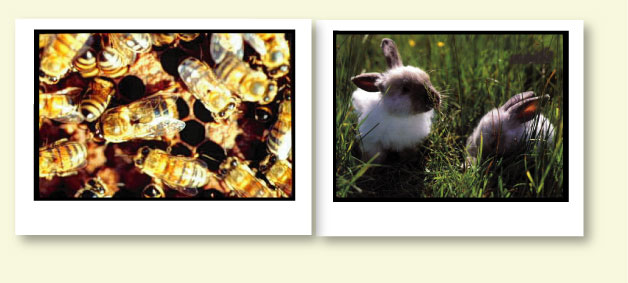Animals : {Generations}
The Fibonacci sequence has been used to describe patterns taking
into account time as a dimension. Two groups examined were rabbits and bees.
Fibonacci himself proposed how the growth of a population of rabbits would
display the Fibonacci sequence over time. in Fibonacci's scenario, in the
first month there is one pair of baby rabbits, one male and one female. It
is assumed that the rabbits mature after one month and from then one reproduce
monthly, giving birth to another pair of rabbits, one male and one female.
Over time a pattern evolves. In any given month the number of pairs of
baby rabbits, the number of pairs of adult rabbits, and the total number
of rabbits will be three consecutive numbers in the Fibonacci sequence. Also,
tracking each element (adult rabbits, baby rabbits, or total rabbits) will
yield the numbers of the Fibonacci sequence in order.
The genealogy of a male bee follows a similar pattern, in reverse order.
This is because male bees come from unfertilized eggs, whereas female bees
come from fertilized ones. Thus, a male bee has only a mother, whereas a
female bee has a mother and a father.
So if we start with one male bee, our first generation will have one bee
in it. The generation before it will be only one bee, as well- his mother.
The generation before that will have two bees, the female bee's mother and
father. The generation before that will have three bees- the mother of the
male bee and the two parents of the female bee. The total number of bees
per generation follow the Fibonacci sequence. One sees a similar pattern when
examining only the female bees or male bees per generation.

Downwards in the tree: {Animals}
Sources use on this page: Koshy, Thomas. Bee image <pelotes.jea.com>; rabbit image <hedweb.com>. See bibliography.
